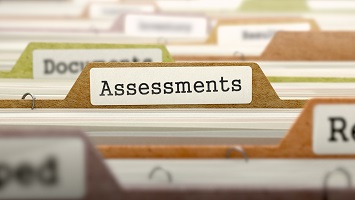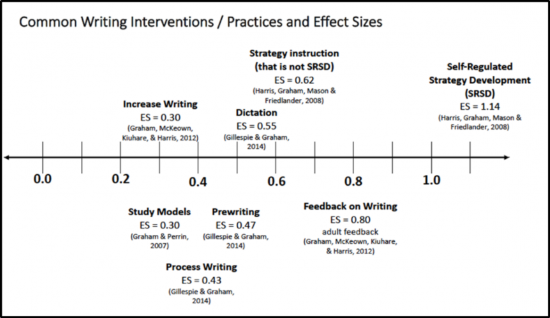Here are the student outcomes in the areas of self-advocacy, IEP development, and self-monitoring, and the practices and systems that helped them achieve those outcomes.
Who are we?
- Hawthorne Country Day School, Approved Private School, students with autism, intellectual disability, multiple disabilities, speech and language impairment, and other health impaired, 5 to 21
- New Rochelle City School District, district-wide
- Mount Pleasant Central School District, district-wide
What are the long-term outcomes for our students with disabilities that we are striving to achieve so that every student is independent and successful in school, career, and community?
- Each and every individual will reach his or her maximum potential in the least restrictive environment.
- Students see themselves as individuals, with capabilities, ambitions and personalities.
- Every student engaged in self-advocacy and self-determined learning.
- Every student setting academic and behavioral goals and monitoring academic and behavioral progress towards those goals
What outcomes have our students with disabilities already achieved?
- Students have engaged in self-advocacy and self-determined learning, and students are skilled and ready for post-secondary success and independence.
- Students are directing more of their IEP process
- Students have increased self-advocacy skills in planning their high school years and beyond
- Students with disabilities are spending more time in general education classe
- Students with disabilities are part of their IEP planning
- Students are verbalizing their need for accommodations
What systems and practices that were implemented to achieve our student outcomes?
- Ensuring students’ plans drive the IEP through the Measurable Post-Secondary Goals and Present Levels of Performance
- Ensuring students have a system for progress monitoring the plan
- Ensuring alignment with evidence-based practices
- Committing to implementing high quality inclusive programs
- Reviewing IEPs across multiple years through an Educational Benefit protocol
- Using results of the Educational Benefit process to align all parts of the IEP and develop quality goals and progress monitoring systems
- Developing PLEPs that describe students’ strengths, preferences, interests, and needs, so that needs drive the goals
- Ensuring staff understand and deliver Specially Designed Instruction through enhanced Co-Teaching structures
- Direct involvement of administrators in defining Co-teaching for the district, and communicating the framework to staff and the school board
- Using the RSE-TASC walk through tool in 72 classrooms, and sharing/discussing results with staff to identify strengths and opportunities
- Surveying teachers about background knowledge of co-teaching and developing professional development on co-teaching models, (SDI, and coaching.
What structures allowed us to support staff in implementing these systems and practices?
- Professional development support for staff
- Coaching cycles for staff
- RSE-TASC trainings
- Collegial reviews
- Departmental meetings
What are we doing next to continue working toward achieving our long-term student outcomes?
- Reviewing and ensuring systems are aligned with NYSED updated regulations and policy guidance
- Extension of Blueprint Survey to earlier grades and to families
- Support teachers in their planning and implementation of co-teaching models, quality IEPs, SDI and student access, and student self-monitoring
If you want to learn about the specific outcomes, practices and systems implemented in each of these schools, visit the google folder at Student Outcomes Conference.
There is a folder for each school with a summary description of their work and the handouts they provided at our 2018 Student Outcome Conference.
If you would like to read similar summaries of student outcomes in other areas of performance, follow the links here:
- Behavior and social-emotional: https://rsetasc.pnwboces.org/student-outcomes-in-developing-social-emotional-and-behavioral-skills-2/
- Post-secondary outcomes and employment: https://rsetasc.pnwboces.org/student-outcomes-in-developing-successful-post-high-school-and-lifelong-employability-skills/
- Literacy, math and academic behaviors: https://rsetasc.pnwboces.org/student-outcomes-in-literacy-math-and-academic-learning-behaviors/


 Data-Driven Decision-Making
Data-Driven Decision-Making  Increasing Post-School Success through Interagency Collaboration
Increasing Post-School Success through Interagency Collaboration  How Can We Improve Deeper Learning for Students with Disabilities?
How Can We Improve Deeper Learning for Students with Disabilities?  Positive Classroom Management: Creating an Environment for Learning
Positive Classroom Management: Creating an Environment for Learning  Self-Determination Skills Empower Students of All Ages
Self-Determination Skills Empower Students of All Ages  Fidelity of Implementation: What is it and Why does it Matter?
Fidelity of Implementation: What is it and Why does it Matter?  Rethinking Classroom Assessment
Rethinking Classroom Assessment  A Three-Step Approach to Identifying Developmentally Appropriate Practices
A Three-Step Approach to Identifying Developmentally Appropriate Practices  Transforming Evidence-Based Practices into Usable Innovations: A Case Study with SRSD
Transforming Evidence-Based Practices into Usable Innovations: A Case Study with SRSD